Jumping into the world of flash photography feels very confusing. What type of equipment should one purchase? What do all of these settings mean? How should one set it all up? Today, let’s discuss whether Off Camera Flash or On Camera Flash is more appropriate for your indoor photography work.
In case we haven’t met, my name is Kelley Hoagland and I am a photographer in Chattanooga, TN. I started incorporating artificial light regularly into my indoor sessions after years of being frustrated by dealing with poor lighting in client’s homes. I love documenting my clients in their natural environment. A total homebody myself, I believe there is really something priceless created during in-home lifestyle sessions. However, I hated sacrificing the clarity, sharpness, and brightness of my typical work. As a result, I set out on a mission to master flash for indoor sessions. I have finally come to a place where I love using it and incorporate it into all of my indoor sessions. Now I would love to teach you!
Uses for On-Camera Flash
On-camera flash is exactly the way it sounds. In this set-up, one slips the hot shoe mounting foot into the hot shoe on the top of the camera. In this way, the camera and speed light (i.e. portable flash) are able to communicate with each other. With my Godox V1, I can either use one speed light in the hot shoe or I can use that speed light as a master/transmitter and add a second or third speed light positioned on a light stand. The master/transmitter speed light will communicate to the other speed lights if they are set in slave/receiver mode.
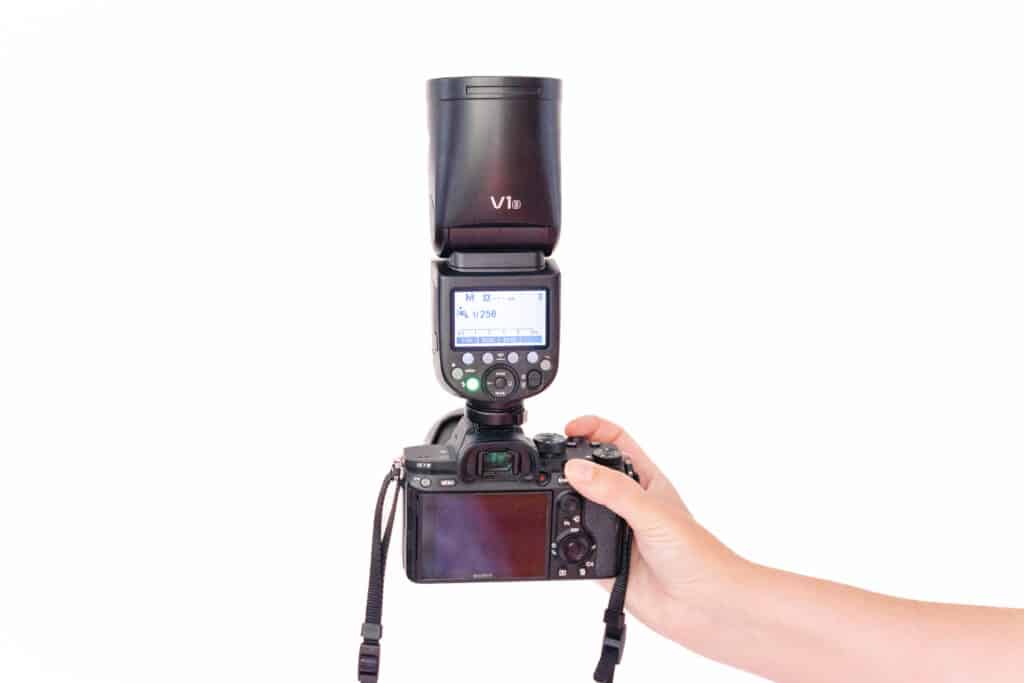

On-camera flash is honestly my least used set up. I tend to avoid it because I move around a lot during my in-home sessions. Every time I move with an on-camera flash, the light moves with me and therefore changes in direction and intensity. My primary goal for artificial lighting during my in-home sessions is to produce flash that looks natural and consistent. A moving light can be a nightmare when editing in post production.
So when do I opt for on-camera flash instead of off camera flash?
- When I’m taking quick snapshots of my family at home and don’t feel like pulling out all of my light stands and gear.
- I used the second set-up pictured, with 1-2 speed lights in slave/receiver mode when I used to photograph events like wedding receptions and parties. In a large space where I was moving around a lot, I liked to keep at least one speed light with me so that I wasn’t having to constantly re-arrange light stands. Granted, photography for those types of events aren’t expected to look 100% like natural light. If my portraits turned out a little “flashy” it wasn’t a big deal.
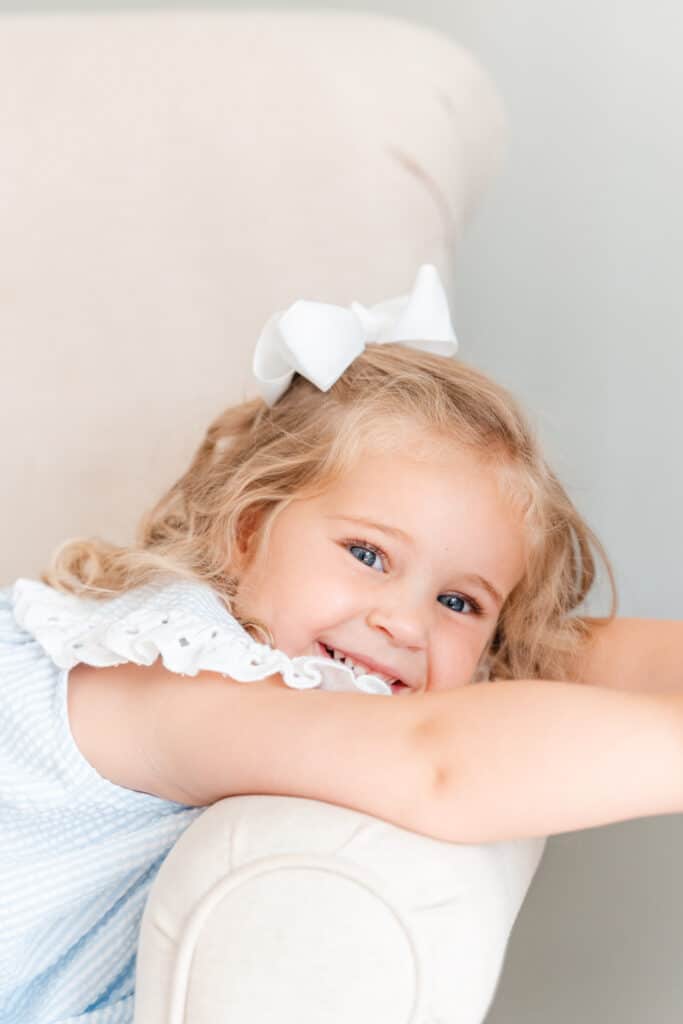
Uses for Off Camera Flash
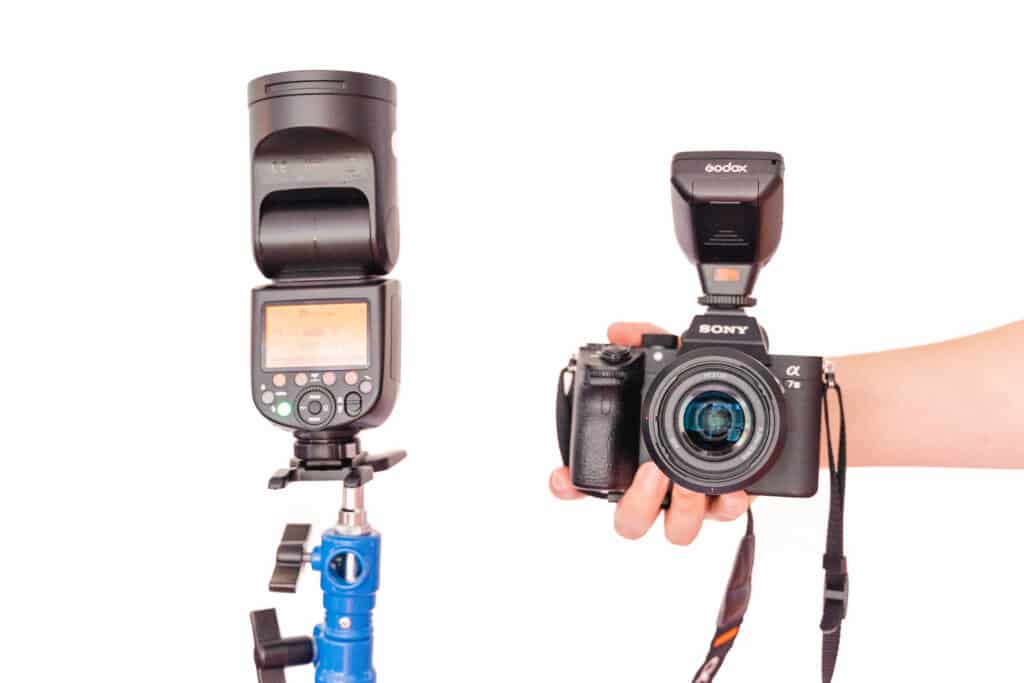
Off Camera Flash is my set-up of choice when completing in-home or indoor photography sessions. In this set up, instead of putting a speed light in the hot shoe on the camera, I use a trigger instead. This trigger communicates with speed lights set up on light stands around the room. Using this arrangement gives much more control in positioning and modifying the light. I can move a much as I want and my lighting stays consistent!

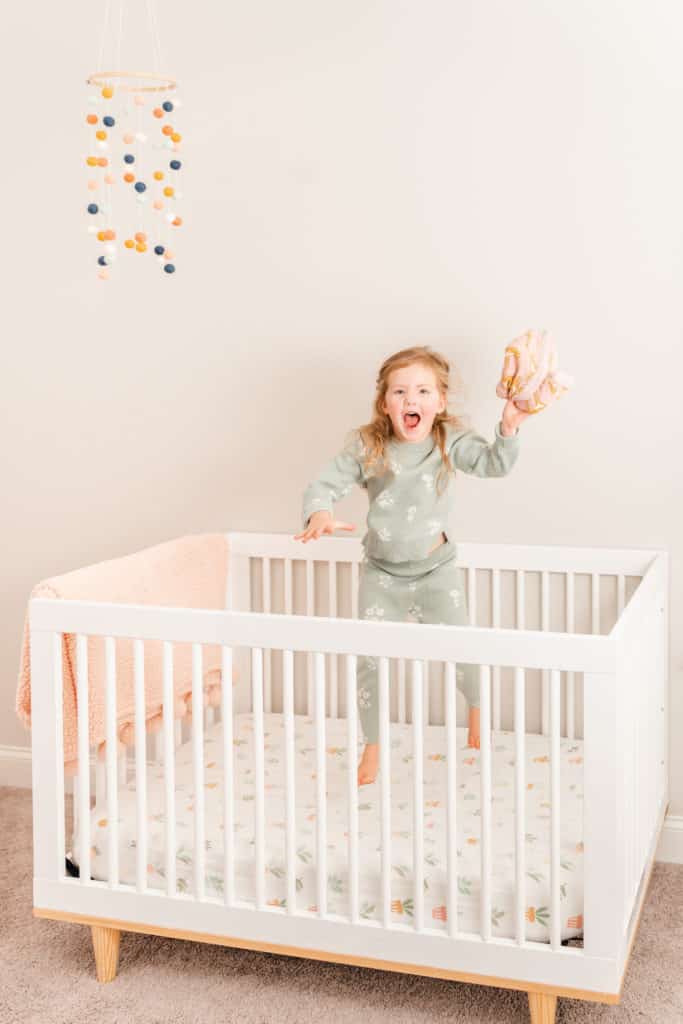

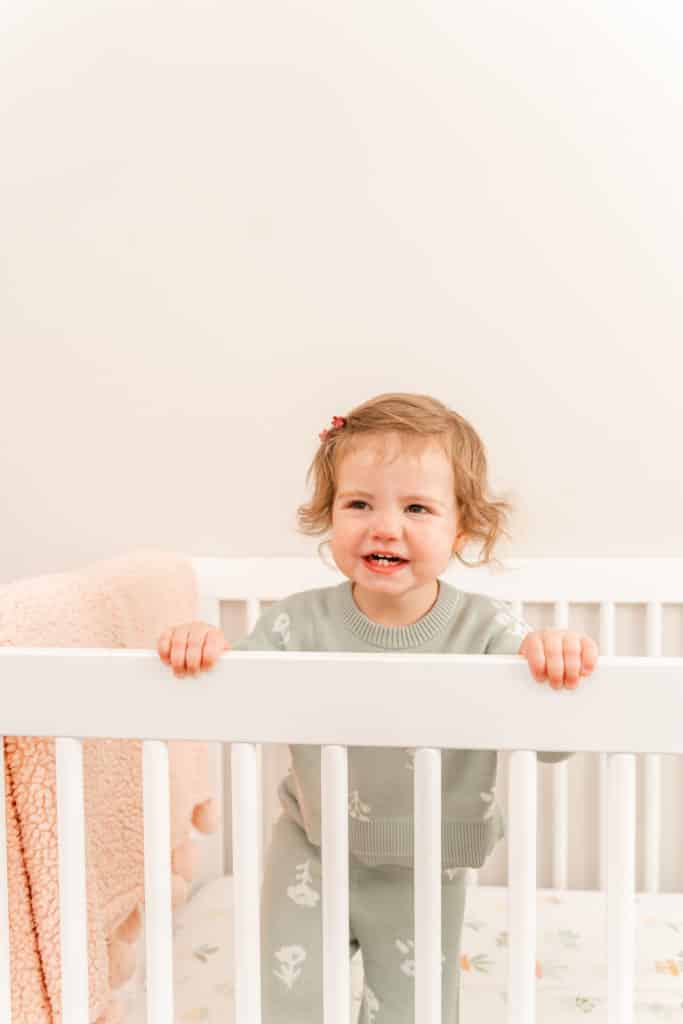
Ready to Learn Flash Photography for Indoor Sessions?
I hope this post has been helpful in clearing up the pros and cons of choosing on camera or off camera flash for your indoor photography. Would you like to learn more about using your speed light? Check out my Free Quick Start Course for Flash Photography! This course introduces learners to the buttons and settings most commonly used on speed lights. Honestly, sometimes the hardest step in learning flash is that first step of taking it out of the box and firing it up for the first time! I would love to help you along in your flash photography journey!








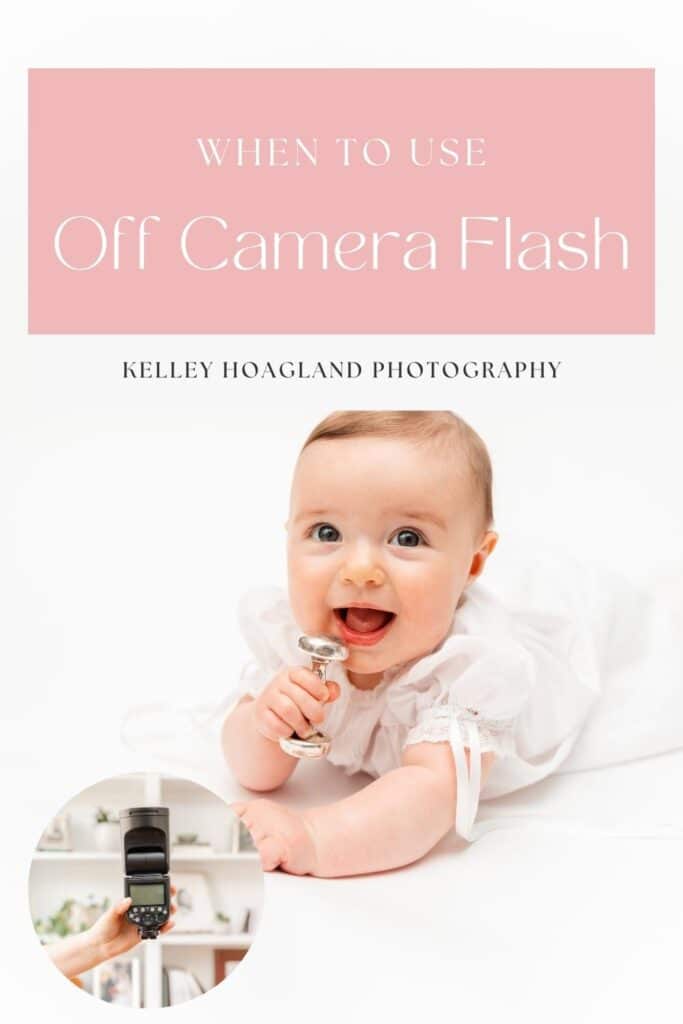

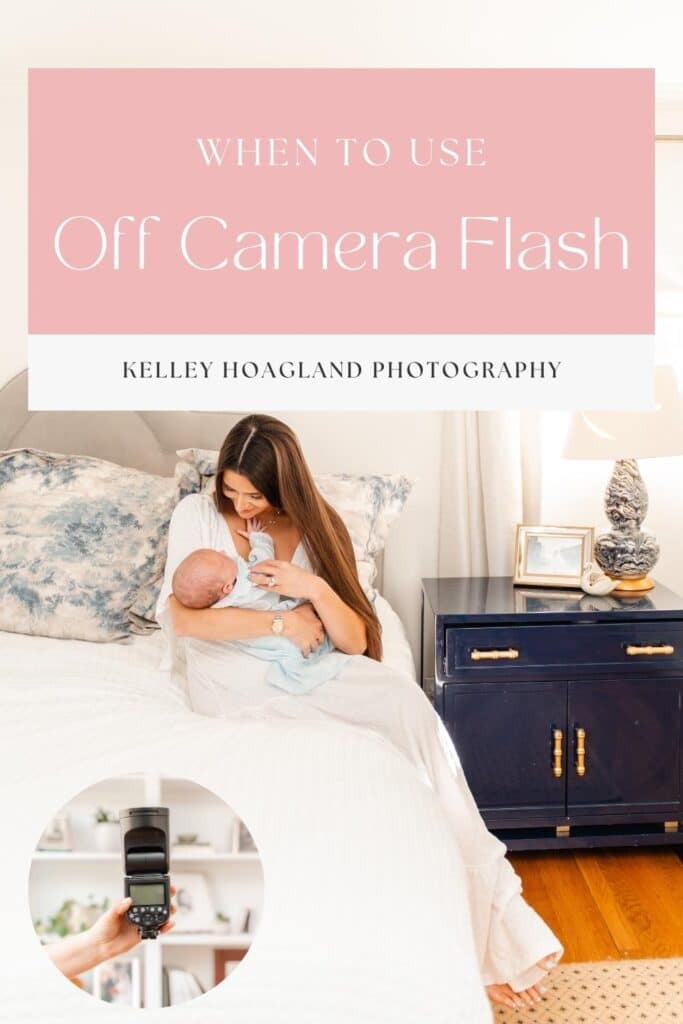

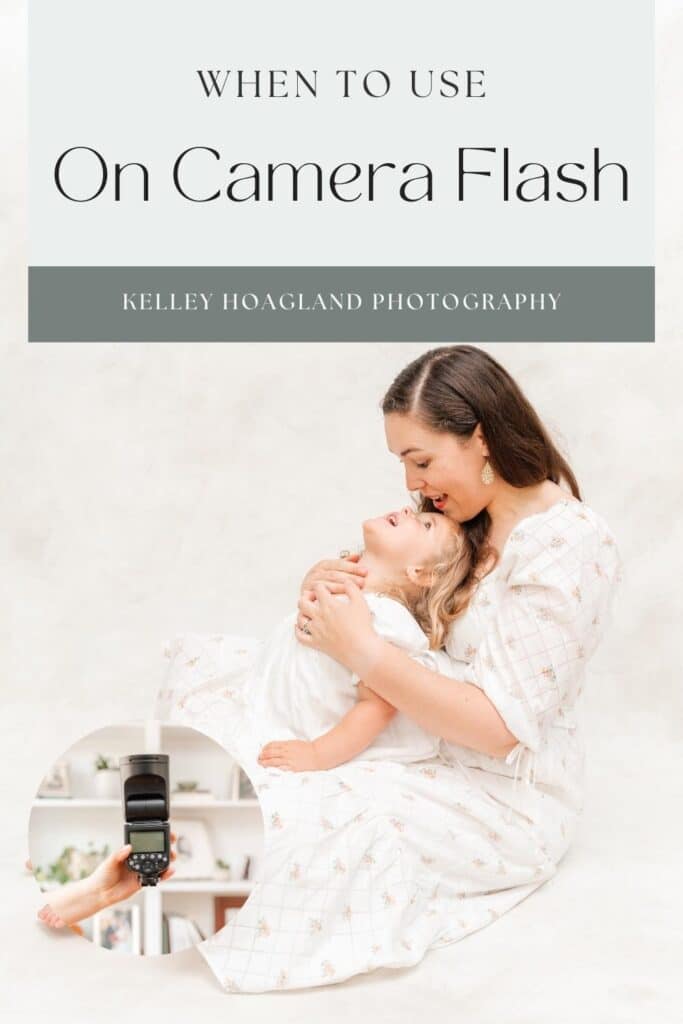
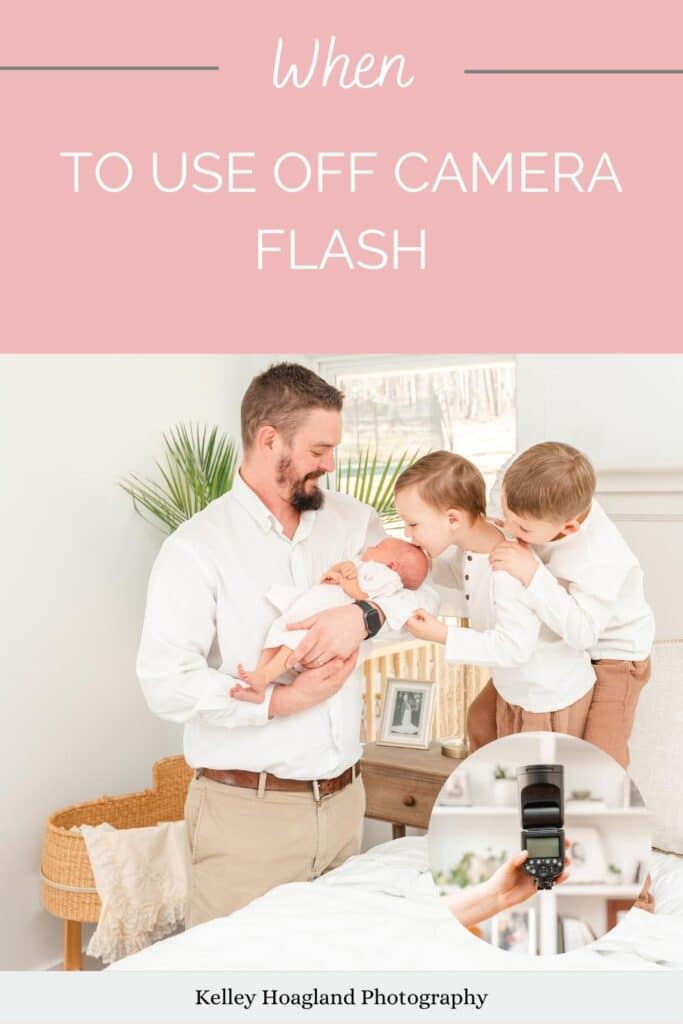
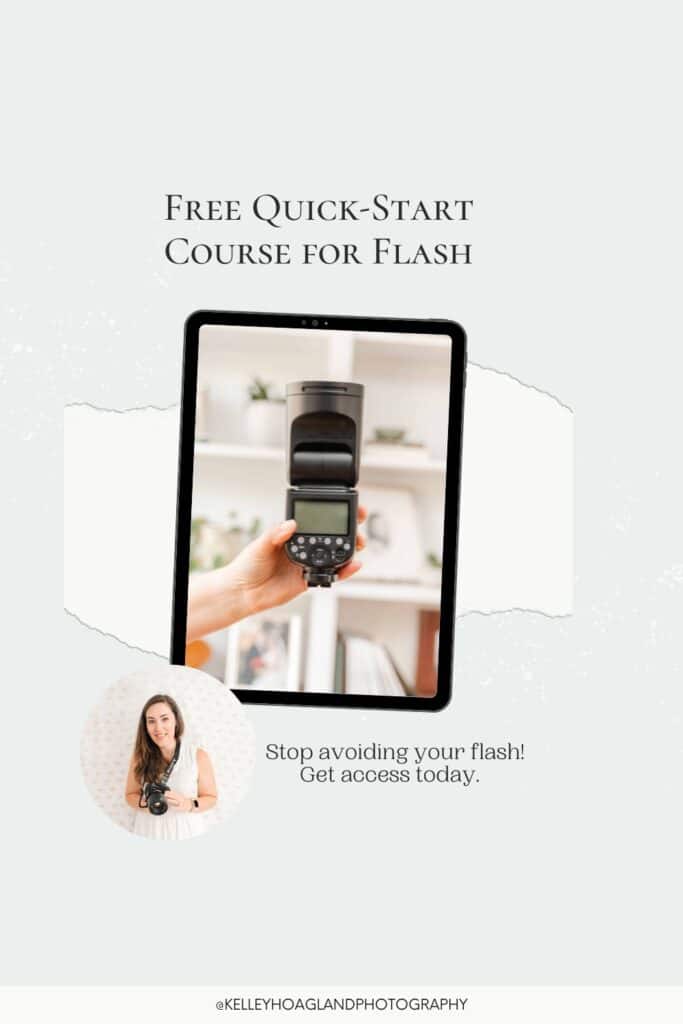
Be the first to comment